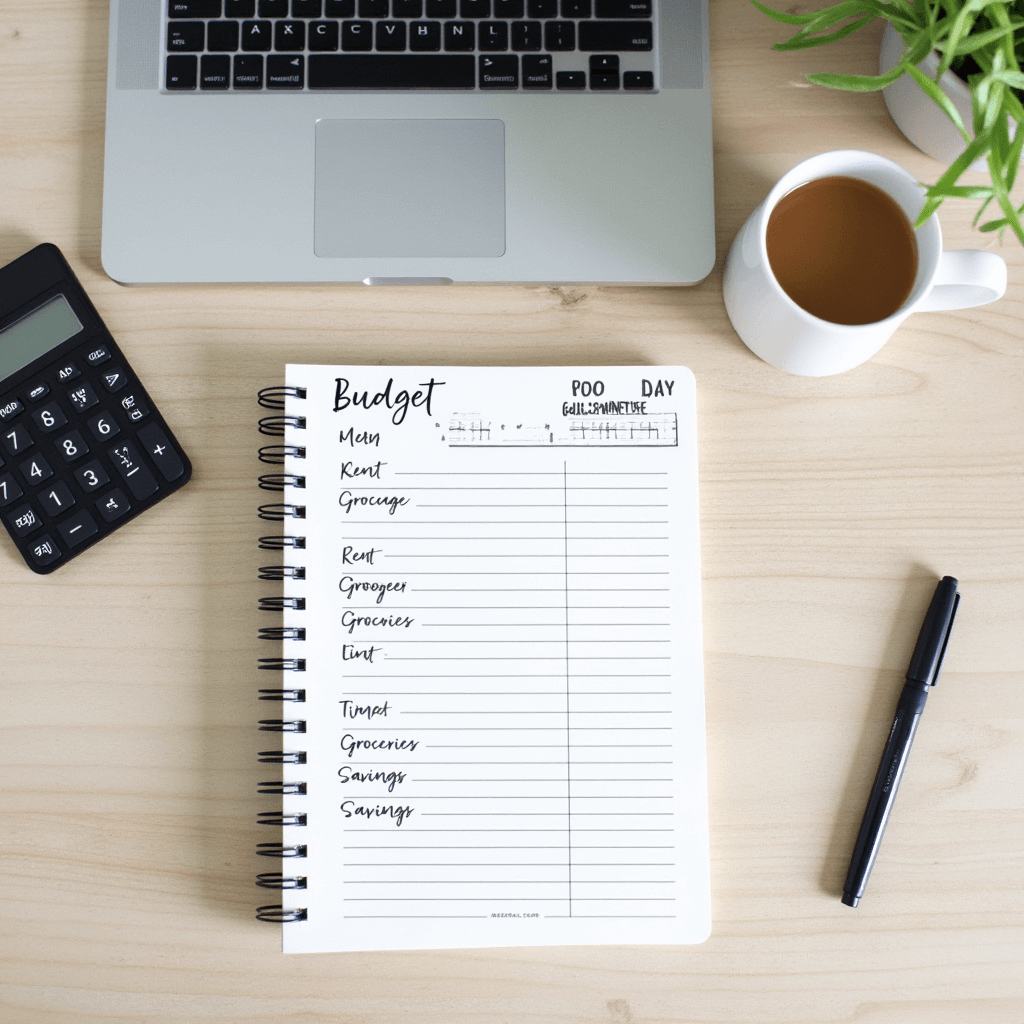
Are you tired of feeling like your money disappears before the month ends? You’re not alone. The truth is, most people don’t actually know where their money goes — they just know it’s gone. That’s where a monthly budget becomes your best friend. Creating a budget isn’t about restricting your life or eliminating all fun; it’s about telling your money where to go, rather than wondering where it went. In this blog, I’ll guide you step-by-step through creating a monthly budget, and yes — I’ve included a free template to make it even easier.
So, what exactly is a monthly budget? In simple terms, it’s a plan for how you’ll spend and save the money you earn each month. It helps you track income, limit overspending, build savings, and work towards financial goals like debt freedom or that dream vacation. Think of it like a GPS for your money — without it, you’re just hoping you don’t drive off a financial cliff.

Let’s start with the first step: knowing your net income. This is the amount you actually take home after taxes and deductions. It’s not the number on your employment contract — it’s what hits your bank account. If you have multiple income sources like freelance work, side hustles, or rental income, make sure to include those too. Use the past few months’ bank statements to get an accurate average, especially if your income fluctuates.
Next up: tracking your spending. Before you can plan how to spend your money, you need to understand your current habits. Break your expenses into two types — fixed and variable. Fixed expenses include things like rent, loan payments, and insurance — stuff that doesn’t change month-to-month. Variable expenses are more flexible: groceries, entertainment, eating out, transport, and subscriptions. Use a notebook, a budgeting app like Mint or PocketGuard, or even just your phone’s Notes app to jot down what you’re spending. You might be surprised how much slips away on random takeout or unused subscriptions.
Once you’ve got a handle on your income and expenses, it’s time to categorize and assign limits. A great place to start is the 50/30/20 rule: allocate 50% of your income to needs (like housing, bills, food), 30% to wants (like streaming services, eating out, shopping), and 20% to savings or debt repayment. This isn’t a one-size-fits-all rule — if your rent eats up 60% of your income, for example, you’ll need to adjust. What matters is that you’re making conscious choices with your money.
Now comes the fun part: using a budgeting template. To make things super easy, I’ve created a free downloadable template in both Excel and Google Sheets formats. It includes pre-labeled categories, auto-calculates your totals, and even helps you track how much you’re saving each month. No complicated formulas. Just plug in your numbers, and you’re good to go. [click here for monthly budget sheet]
After setting your budget, the most important part is — you guessed it — sticking to it. Budgeting isn’t set-it-and-forget-it. Check in weekly to make sure you’re on track. At the end of each month, review what worked and what didn’t. Did you overspend in one category? Did you forget to budget for an annual expense? It’s normal to tweak your budget regularly. That’s how you improve.
You might be wondering: “How do I actually save money when there’s nothing left at the end of the month?” The answer lies in small, smart choices. Cancel unused subscriptions — do you really need Netflix and Disney+? Cook more meals at home. Use cashback apps like Rakuten or Honey to get deals while shopping. And always, always avoid lifestyle inflation — just because you earned more this month doesn’t mean you need to spend more.
Here’s a quick example to visualize how a beginner budget might look:
Let’s say you bring home $2,500/month. You allocate $1,250 (50%) to needs — that’s rent, groceries, utility bills. You set aside $750 (30%) for wants — dinner outings, your Spotify subscription, or a weekend trip. The remaining $500 (20%) goes straight into savings or paying off a credit card. You track your expenses weekly and find that your grocery bill is creeping too high, so next month you plan better meals and avoid impulsive snacks. That’s budgeting in action.
While you’re building this habit, try to avoid common mistakes like forgetting irregular expenses — things like birthday gifts, car maintenance, or annual subscriptions. Always build a small buffer into your budget for surprise expenses. And don’t make your budget too strict. Leave room for joy, or you’ll burn out and give up. A $20 coffee date with a friend won’t ruin your finances — but five unplanned nights of takeout might.
Finally, remember this: budgeting isn’t a punishment. It’s a tool that empowers you. It’s your way of saying, “I’m in charge now.” Whether your goal is to stop living paycheck to paycheck, save for your dream home, or finally knock out that credit card debt, it all starts with a plan.
Ready to begin? Download the free budget planner template [Click Here] and create your first monthly budget today. You’ll be surprised how quickly you gain confidence once you know where your money is going — and that’s where the magic begins.





